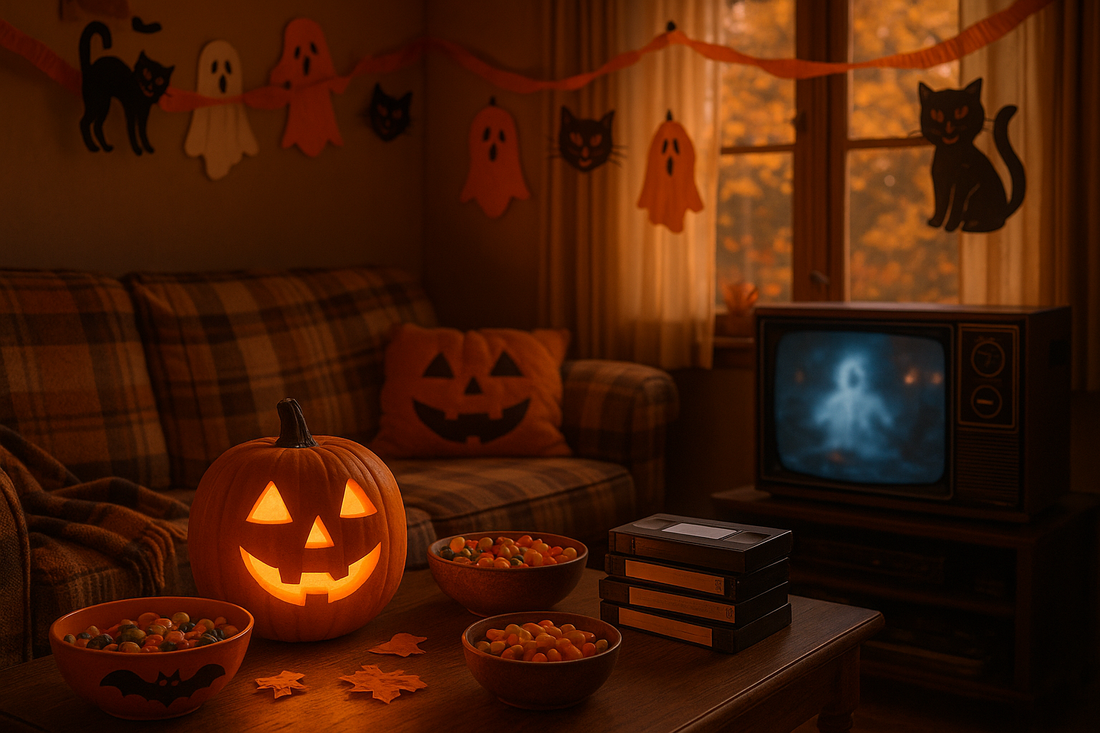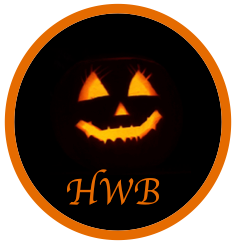
Why Nostalgia is the Secret Ingredient to Halloween’s Magic
Share
Every October, the air shifts. The wind feels crisper, the nights come sooner, and there’s a tinge of magic floating in the atmosphere that no other season seems to hold. But Halloween’s magic isn’t just about pumpkins glowing on porches or the thrill of a horror movie marathon. Its most powerful ingredient is nostalgia—the way it reaches back through memory, childhood, and culture to wrap us in a spell of familiarity and wonder. Halloween thrives on the echoes of the past, making it a holiday that is as much about memory as it is about mystery.
The First Whiff of Autumn
For many, the magic of Halloween starts long before October 31st. The smell of fallen leaves, the first sip of pumpkin spice, or the faint sound of a spooky song on the radio acts like a time machine. Suddenly, we’re transported back to being kids again—running across neighborhoods in costumes, clutching pillowcases full of candy, or watching specials like It’s the Great Pumpkin, Charlie Brown with our families. Nostalgia heightens all of it. Those small sensory triggers awaken a version of ourselves that once believed witches could fly across the moon and ghosts might actually be hiding under the bed.
Psychologists often explain nostalgia as a bittersweet longing for moments of the past. But on Halloween, that longing becomes joyful. It’s not painful to remember trick-or-treating or carving pumpkins with friends. Instead, it’s comforting—like reuniting with an old friend you only see once a year. Halloween is a ritual of reliving childhood memories, and in that ritual, we rediscover the innocence and wonder that adulthood often buries.
The Timeless Traditions We Carry
Think about the traditions of Halloween: costumes, candy, pumpkin carving, haunted houses. None of these are new. They’ve been around for generations, handed down like family heirlooms. Every time you scoop the seeds from a pumpkin or light a candle in a jack-o’-lantern, you’re participating in a ritual that millions have done before you. The act itself becomes nostalgic, even if you’re carving alongside roommates instead of parents.
Nostalgia thrives on repetition, and Halloween provides that repetition in spades. The way neighborhoods decorate with cobwebs and inflatables, the way schools host costume parades, the way families rewatch the same spooky films every year—it all becomes a collective memory. You may not know the kid who lived three houses down when you were ten, but you share the memory of sprinting across streets with a sugar-fueled grin. That shared nostalgia is what binds communities during spooky season. Halloween becomes a celebration of remembering together.
Pop Culture’s Role in Halloween Nostalgia
One of Halloween’s greatest time machines is pop culture. Movies, TV shows, commercials, and even music cement themselves into our memories of spooky season. A VHS tape of Hocus Pocus, a worn-out Goosebumps paperback, or the glow of Are You Afraid of the Dark? on Nickelodeon acts as a gateway back to childhood bedrooms and weekend sleepovers.
Unlike Christmas, which is dominated by religious and commercial tradition, Halloween nostalgia thrives in its pop culture catalog. Every generation has its Halloween icons: Universal monsters for grandparents, slasher films for parents, 90s cartoons for millennials, and streaming-era originals for Gen Z. Each generation clings to what was scary or magical during their formative years, and Halloween’s magic grows richer with each addition.
It’s why reruns of old commercials or vintage costumes trend online every October. Seeing a grainy ad for McDonald’s Halloween pails or hearing the Monster Mash instantly stirs a memory, even for those who weren’t alive when it first aired. Nostalgia allows Halloween to exist outside of time—mixing the 1950s, 80s, 90s, and 2000s together into one ongoing celebration.
The Emotional Alchemy of Nostalgia
What makes nostalgia such a powerful force for Halloween isn’t just memory—it’s emotion. Nostalgia makes us feel safe. It reminds us of times when life was simpler, when the scariest thing in the world was whether a neighbor would give out king-sized candy bars. In a world full of stress, deadlines, and constant noise, Halloween nostalgia offers a retreat.
When we decorate our homes with retro décor, binge the same movies every October, or buy candy we haven’t tasted since grade school, we’re engaging in a form of emotional alchemy. Nostalgia transforms ordinary objects into vessels of comfort and joy. A plastic pumpkin bucket isn’t just a container; it’s a memory of sticky hands, sugar highs, and racing the clock before curfew. A witch figurine on a shelf isn’t just decoration; it’s a symbol of every haunted hayride or fall carnival we’ve ever loved.
That emotional connection is what makes Halloween decorations so much more powerful than mere seasonal décor. People don’t just want their homes to look spooky—they want them to feel like the Halloween of their childhood. That’s why retro blow molds and vintage-style masks sell out faster than modern, hyper-detailed decorations. Nostalgia is the magic that makes fake cobwebs and plastic skeletons feel enchanting instead of cheap.
Costumes as Portals to the Past
Costumes are another realm where nostalgia reigns supreme. Think about how often Halloween costumes recycle characters and ideas. Every year, you’ll find kids (and adults) dressed as vampires, witches, zombies, or superheroes. But mixed into those classics are costumes steeped in generational nostalgia. Adults in their 30s may dress as 90s cartoon characters, while Gen Z flocks to Y2K pop culture references. Costumes become portals—not just into fantasy but into memory.
When you dress up as a character from your childhood, you’re reliving the joy of when you first loved them. Wearing a Scooby-Doo or Power Rangers costume isn’t just fun; it’s a way of embodying nostalgia. It allows us to physically step into the memory and keep it alive for one more October night. The magic of Halloween costumes is that they blur the line between past and present, letting nostalgia walk hand in hand with imagination.
Haunted Houses and the Fear We Remember
Even fear is nostalgic on Halloween. Think back to the first time you entered a haunted house or watched a scary movie. You probably laughed afterward, realizing it wasn’t as terrifying as you thought. But you also probably remember the butterflies in your stomach, the adrenaline rushing, the way you clung to a friend or sibling. Haunted houses and horror movies become addictive because they recreate that rush we first felt as kids.
Nostalgia is why adults still flock to haunted attractions or line up for horror film premieres. The scares themselves may evolve, but the core thrill stays the same. The creak of a door, the flicker of a light, the sudden scream in the dark—it all echoes memories of the first time we were scared in the safety of Halloween’s embrace. Fear, when paired with nostalgia, becomes fun instead of overwhelming. It’s fear wrapped in familiarity, and that paradox is what makes Halloween unforgettable.
Why Nostalgia Will Always Be Halloween’s Secret Spell
So why does nostalgia feel more potent during Halloween than any other holiday? The answer lies in Halloween’s blend of playfulness and ritual. It’s a holiday designed to suspend reality, to let imagination run wild. Nostalgia fits perfectly into that framework. It lets us escape adulthood, if only for a season, and return to a place where magic, monsters, and mystery were real.
The beauty of nostalgia is that it evolves. The child who once trick-or-treated now decorates their apartment with the same spirit. The teenager who once stayed up too late reading Goosebumps now introduces their kids to the same stories. Nostalgia ensures that Halloween isn’t just for children. It keeps the holiday alive across generations, layering memories on top of memories like carved pumpkins glowing year after year on the same porch.
Halloween would still be fun without nostalgia—but it wouldn’t feel as magical. Without those echoes of childhood, the decorations would just be plastic, the costumes just fabric, the candy just sugar. Nostalgia transforms them into something more: symbols of who we were, who we are, and who we’re still becoming. That’s why every October feels like stepping into a dream you’ve had before and can’t wait to have again.
The Magic Lives On
As another October approaches, you’ll probably find yourself reaching for the same decorations, watching the same movies, and buying the same candy as always. That’s not laziness or lack of creativity—it’s instinct. You’re reaching for the past because the past is what makes Halloween shine. Every pumpkin carved, every costume chosen, every song played is a thread tying you to your younger self.
Nostalgia is the cauldron where Halloween’s magic brews. Without it, the season would just be a collection of spooky aesthetics. With it, Halloween becomes a celebration of memory, community, and imagination. And that’s why no matter how old you get, the magic of Halloween never fades. It grows stronger with every October you live through, every memory you add, and every nostalgic spark that makes you believe—if only for a night—that magic is real.
